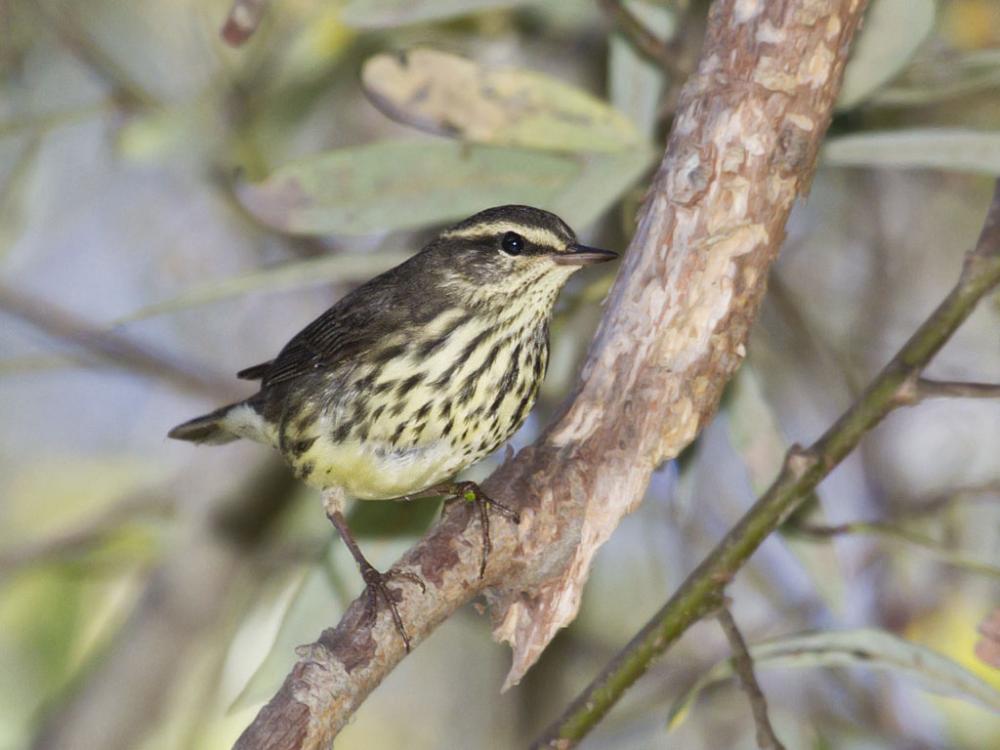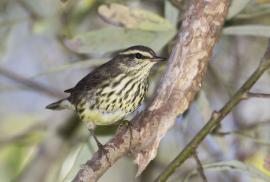Guide to Boreal Birds
Overview
Ornithologist E. H. Forbush's observation about the Northern Waterthrush, made more than half a century ago, still applies: "It is a large wood warbler disguised as a thrush and exhibiting an extreme fondness for water." Like its relative the Ovenbird, it walks rather than hops. This species is among the first to move south during the fall migration, and southern migrants are regularly reported by the middle of July or earlier. One individual banded on Long Island during a southbound flight was recovered the following winter in Venezuela and, remarkably, was trapped a year later at the same place in Venezuela.
Across Canada, Northern Waterthrush nests primarily in spruce bogs, along the many alder- and willow-bordered rivers entering the Arctic and Atlantic oceans. They can also be found and along lakes, swamps, and wet woodlands. The ground-dwelling Northern Waterthrush forages below the forest canopy near the water's edge for both aquatic and terrestrial insects and invertebrates. Individuals usually arrive on the breeding grounds in June. Hydropower projects have destroyed large areas of Northern Waterthrush habitat in some some regions of the boreal forest. The effects of acid rain in the eastern part of the species range where such effects are most concentrated are of potential concern. Because wetlands receive and concentrate contaminants, species that forage there may be at risk from pollution. Aerial spraying for control of spruce budworm could also negatively affect Northern Waterthrush populations by reducing biomass of prey or killing birds directly if non-biodegradable toxics are used.
Description
6" (15 cm). A terrestrial, thrush-like warbler. Olive-brown above; pale yellowish below with black streaks; narrow, yellowish-white eyebrow; streaked yellowish throat. Frequently bobs tail. See Louisiana Warbler.
Voice
Song chee-chee-chee, chip-chip-chip-chew-chew-chew, loud and ringing, speeding up at the end. Call a sharp chink.
Nesting
4 or 5 creamy-white eggs, with brown blotches, in a nest of moss set in a bank, at the base of a trunk, or among the roots of an overturned tree.
Habitat
Lakeshores, wooded swamps, and cool bogs, in the breeding season; almost any wooded habitat during migration.
Range/Migration
Breeds from Alaska and much of Canada south to northern United States. Winters in tropics.



